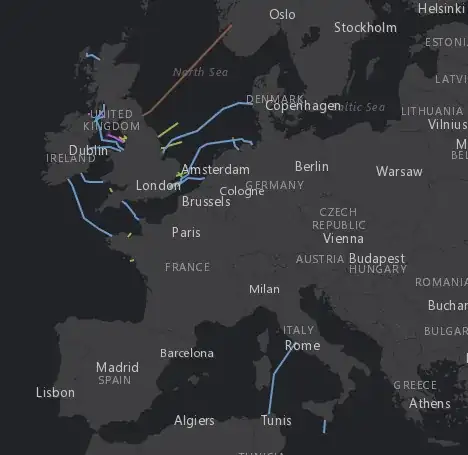No.
It is completely impractical. I would even go so far as to say that it will never be practical given that the cost of transmission system construction will never outpace that of local generation.
The copper capacity tables are here and I could do a bunch of math for you, but it is pointless.
Generating electricity is a relatively
easy thing to do. There are so many different strategies: coal, wind, hydro, solar, nuclear, CNG, mixed-fuel, biofuel, et. c. ad. infin. At least one of them will be practical in any given locale -- at least more so than running greater than 20,000km of cable would be. I'm not even sure it's absolutely possible since the tremendous voltages you would need to overcome the staggering losses might make insulation requirements beyond the reach of today's materials.
Actual Power Lines
The longest power line on the planet is in China and only runs 2,059 km using a special extremely high voltage DC configuration (avoids the phase synchronization issue). It doesn't run through the ocean as that would dramatically increase the losses. It isn't cost effective (read: practical), which is why China is the only country with these types of lines in mandated use.
As a case study it cost 3.5 billion to put in and can transport 7.2e6 kw. For perspective, consider that 3.5 billion is the cost of building a local plant that can generate almost half that much power (and deliver it). In the Chinese case all they got for their money was the delivery -- they still have to finance the generation.
The longest conventional AC lines in the US are ~240 km. It just isn't practical to go planet-scale with transmission lines.
Even Space is More Practical
It is even much more efficient and practical to beam power from space using Wireless Power Transmission (WPT) technology (~160km), than to move it terrestrially half-way around the world (~20,000km). It is also more politically palatable since you don't cross any other foreign territory and "energy security" is a sensitive topic.
Google "Solar Power Satellites Wireless Power Transmission" and you will find a broad base of literature on this idea. Here are a few references to papers to get you started: 1 2 3
It appears to be gaining traction. Japan and others are seriously considering deploying such an energy architecture.
